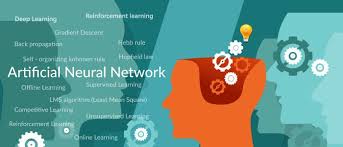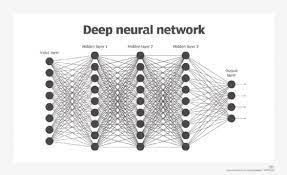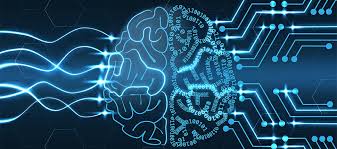Understanding Neural Network Intelligence
In the rapidly evolving field of artificial intelligence, neural networks have emerged as a cornerstone technology driving advancements in machine learning and deep learning. But what exactly is neural network intelligence, and how does it shape the future of AI?
What Are Neural Networks?
Neural networks are computational models inspired by the human brain’s structure and function. They consist of interconnected layers of nodes, or “neurons,” which process information by responding to inputs with corresponding outputs. Each connection between neurons carries a weight that adjusts as learning progresses, allowing the network to make increasingly accurate predictions or decisions.
The Mechanics of Neural Networks
The architecture of a neural network typically includes an input layer, one or more hidden layers, and an output layer. The input layer receives data, which is then transformed through the hidden layers using activation functions that introduce non-linearity into the model. This transformation enables neural networks to learn complex patterns and relationships within data.
Training Neural Networks
The process of training a neural network involves feeding it large datasets and using algorithms such as backpropagation to minimize errors in its predictions. During training, the network adjusts its weights based on the error rate obtained from comparing predicted outputs with actual results. This iterative process continues until the model achieves desired accuracy levels.
Applications of Neural Network Intelligence
Neural networks have revolutionized numerous industries by enabling machines to perform tasks that traditionally required human intelligence. Here are some notable applications:
- Image and Speech Recognition: Convolutional neural networks (CNNs) excel at identifying patterns in visual data, making them ideal for image recognition tasks such as facial recognition and object detection. Similarly, recurrent neural networks (RNNs) are used for speech recognition applications.
- NLP and Translation: Natural language processing (NLP) leverages neural networks to understand and generate human language, powering applications like chatbots, sentiment analysis, and real-time translation services.
- Healthcare: In medical diagnostics, neural networks assist in analyzing complex datasets such as medical imaging scans to detect anomalies or predict disease outcomes.
- Finance: Financial institutions use neural network models for fraud detection, algorithmic trading, and risk management by identifying patterns in large volumes of financial data.
The Future of Neural Network Intelligence
The potential for neural network intelligence continues to expand as researchers develop more sophisticated architectures like generative adversarial networks (GANs) and transformer models. These innovations promise enhanced capabilities in areas such as creative content generation and autonomous systems.
As we look toward the future, ethical considerations surrounding AI deployment become increasingly important. Ensuring transparency in decision-making processes and addressing biases within training datasets will be crucial for building trust in AI technologies powered by neural networks.
9 Essential Tips for Enhancing Neural Network Intelligence
- Start with a clear problem statement and objective for your neural network.
- Collect and preprocess high-quality data to train your neural network effectively.
- Choose the appropriate neural network architecture based on the problem you are solving.
- Regularize your neural network to prevent overfitting and improve generalization.
- Use techniques like dropout and batch normalization to enhance training performance.
- Fine-tune hyperparameters such as learning rate, batch size, and activation functions for optimal results.
- Monitor the training process by visualizing metrics like loss and accuracy to track progress.
- Evaluate your neural network using separate validation and test datasets to assess its performance accurately.
- Continuously update and refine your neural network intelligence based on feedback and new data.
Start with a clear problem statement and objective for your neural network.
To maximize the effectiveness of your neural network, it is crucial to begin by defining a clear problem statement and objective. By articulating the specific issue you aim to address and establishing measurable goals for your network, you provide a solid foundation for the entire development process. A well-defined problem statement helps focus your efforts, guide model selection, and determine the appropriate data sources and features to include. Setting clear objectives ensures that your neural network is designed with a purpose, leading to more targeted training, evaluation, and ultimately, successful outcomes.
Collect and preprocess high-quality data to train your neural network effectively.
To optimize the performance of your neural network intelligence, it is crucial to gather and preprocess high-quality data before training. The quality and relevance of the data directly impact the network’s ability to learn patterns and make accurate predictions. By ensuring that your dataset is clean, well-organized, and representative of the problem you are trying to solve, you set a solid foundation for effective neural network training. Preprocessing steps such as normalization, feature scaling, and handling missing values can further enhance the quality of your data and improve the network’s learning process.
Choose the appropriate neural network architecture based on the problem you are solving.
When delving into the realm of neural network intelligence, a crucial tip to bear in mind is the significance of selecting the right neural network architecture tailored to the specific problem at hand. The effectiveness and efficiency of a neural network heavily depend on its architecture, including the number of layers, types of neurons, and connections between them. By carefully analyzing the characteristics and requirements of the problem you aim to solve, you can make informed decisions on choosing an architecture that optimally aligns with the data patterns and complexities involved, ultimately enhancing the network’s performance and accuracy in addressing the targeted challenge.
Regularize your neural network to prevent overfitting and improve generalization.
Regularizing your neural network is a crucial tip to prevent overfitting and enhance generalization capabilities. By incorporating regularization techniques such as L1 or L2 regularization, dropout, or early stopping, you can effectively control the complexity of your model and avoid memorizing noise in the training data. This helps the neural network focus on learning essential patterns and features, leading to improved performance on unseen data and better overall generalization. Regularization acts as a safeguard against overfitting, ensuring that your neural network remains robust and reliable in real-world applications.
Use techniques like dropout and batch normalization to enhance training performance.
To enhance training performance in neural network intelligence, it is recommended to utilize techniques such as dropout and batch normalization. Dropout involves randomly deactivating a percentage of neurons during training, which helps prevent overfitting and encourages the network to learn more robust features. On the other hand, batch normalization normalizes the input of each layer to stabilize and accelerate the training process by reducing internal covariate shift. By incorporating these techniques into neural network models, researchers can improve convergence speed, generalization capabilities, and overall performance of the network.
Fine-tune hyperparameters such as learning rate, batch size, and activation functions for optimal results.
To optimize the performance of a neural network model, it is essential to fine-tune hyperparameters like learning rate, batch size, and activation functions. Adjusting these parameters can significantly impact the model’s ability to learn and make accurate predictions. The learning rate determines how quickly the model adapts to the training data, while batch size affects the efficiency of gradient computations during training. Additionally, choosing the right activation functions can help introduce non-linearity and enable the network to capture complex patterns in the data. By carefully tuning these hyperparameters, researchers and practitioners can achieve optimal results and enhance the overall effectiveness of neural network intelligence applications.
Monitor the training process by visualizing metrics like loss and accuracy to track progress.
Monitoring the training process of a neural network is essential for optimizing its performance. By visualizing key metrics such as loss and accuracy throughout the training phase, practitioners can track the model’s progress and make informed decisions to enhance its learning capabilities. Observing how these metrics evolve over time provides valuable insights into the network’s behavior, helping identify areas for improvement and fine-tuning parameters to achieve desired outcomes. Regularly monitoring these metrics ensures that the neural network is continuously learning and adapting, ultimately leading to more accurate predictions and efficient decision-making.
Evaluate your neural network using separate validation and test datasets to assess its performance accurately.
To ensure the accuracy and reliability of your neural network model, it is crucial to evaluate its performance using separate validation and test datasets. By splitting your data into these distinct sets, you can assess how well the model generalizes to unseen data and avoid overfitting. The validation dataset helps fine-tune the model during training, while the test dataset provides an unbiased measure of its performance. This rigorous evaluation process enables you to make informed decisions about the effectiveness of your neural network intelligence and optimize its capabilities for real-world applications.
Continuously update and refine your neural network intelligence based on feedback and new data.
To maximize the effectiveness of your neural network intelligence, it is essential to continuously update and refine the model based on feedback and new data. By incorporating feedback from users or outcomes of predictions, you can iteratively improve the network’s performance and accuracy. Additionally, integrating new data into the training process allows the neural network to adapt to evolving patterns and trends, ensuring its relevance and efficacy in making informed decisions. This proactive approach to updating and refining neural network intelligence enables it to stay agile and responsive to changing environments, ultimately enhancing its ability to deliver reliable results.



